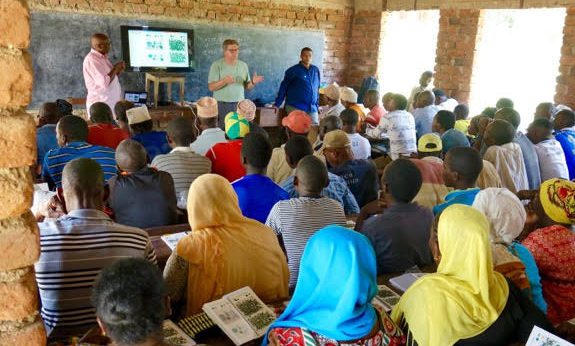GIA commits $1.3m to artisanal mining education project

Register to get 1 free article
Reveal the article below by registering for our email newsletter.
Want unlimited access? View Plans
Already have an account? Sign in
Gemological Institute of America (GIA) in Tanzania will expand distribution of its gem guide for artisanal miners to other communities and countries in Africa.
Speaking at the ICA Congress in Bangkok on 15 October, GIA President and CEO Susan Jacques announced a four-year, $1.3m (£1m) commitment, funded from the GIA endowment, to expand the program in Tanzania, Madagascar, Nigeria, Rwanda and Zambia.
Working with Pact, a Washington D.C.-based international development non-profit organization with expertise in the region, GIA plans to “reach 10,000 miners with relevant information on how to evaluate the quality of the rough they mine.”
CEO, Susan Jacques said: “This is a tremendous step forward in our efforts to bring information directly to artisanal miners right at the beginning of the gem and jewelry supply chain.”
“We know that this investment will bring an invaluable benefit to miners, their families and the communities in which they live.”
The gem guide project began shortly after GIA distinguished research fellow, Dr. James Shingley witnessed the “difficult” working conditions of artisanal miners during a trip to Kenya and Tanzania in 2008.
Dr Shingley and Dona Dirlam, previous director of the GIA library, created the booklet, “Selecting Gem Rough: A Guide for Artisanal Miners” with the help from research and library staff. The booklet was first developed in English and later translated into Swahili.
Working with Pact, images of gemstones found in East Africa and illustrations of how to examine and evaluate rough gems, feature in the booklet, which was piloted in 2016. It comes equipped with resources which protect the booklet from weather conditions and can be used to sort and evaluate rough gems.
Cristina M. Villegas, technical program manager for Pact’s Mines to Market said: “We found that for every dollar invested, there was a 12-fold social return that will last years into the future. With their new knowledge, miners improve their income, send their children to school, invest in their mines and their communities.”
Over 1,000 artisanal miners were trained on how to use the guide and the tray during a two-week, by GIA staff including, Robert Weldon the current director of the Richard T. Liddicoat Gemological Library and Information Centre.
GIA’s initial efforts to provide information to small scale, artisanal miners came full circle when the GIA team visited the Tanzanian Association of Women Miners (TAWOMA), who participated in the very first training session for the guide.
Weldon commented: “There is nothing more rewarding than seeing the reaction of the miners as they learn the material – you instantly see that you’ve positively made a change in someone’s life. These transcendent moments make us so proud that we can provide artisanal miners with a gem guide that gives them the confidence to know their value in the market.”







